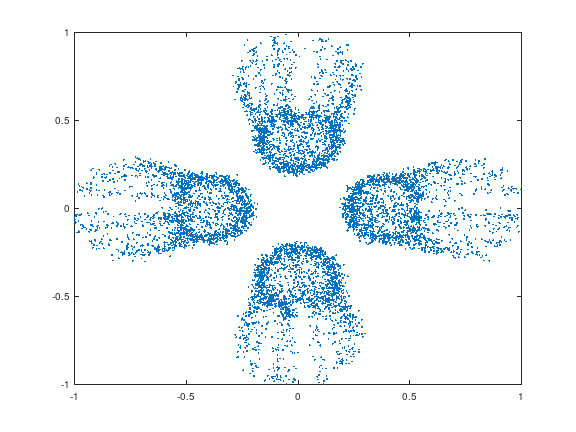This is where navigation should be.
DEMO_OFDM - Demo of Gabor systems used for OFDM
Description
This demo shows how to use a Gabor Riesz basis for OFDM.
We want to transmit a signal consisting of 0's and 1's through a noisy communication channel. This is accomplished in the following steps in the demo:
- Convert this digital signal into complex valued coefficients by QAM modulation.
- Construct the signal to be transmitted by an inverse Gabor transform of the complex coefficients
- "Transmit" the signal by applying a spreading operator to the signal and adding white noise
- Convert the received signal into noisy coefficients by a Gabor transform
- Convert the noisy coefficients into bits by inverse QAM.
Some simplifications used to make this demo simple:
- We assume that the whole spectrum is available for transmission.
- The window and its dual have full length support. This is not practical, because all data would have to be processed at once. Instead, an FIR should be used, with both the window and its dual having a short length.
- The window is periodic. The data at the very end interferes with the data at the very beginning. A simple way to solve this is to transmit zeros at the beginning and at the end, to flush the system properly.

Received coefficients.
This figure shows the distribution in the complex plane of the
received coefficients. If the channel was perfect, all the points
should appear at the complex roots of unity (1,i,-1 and -i). This
demo is random, so everytime it is run it produces a new plot, and
the error rate may vary.